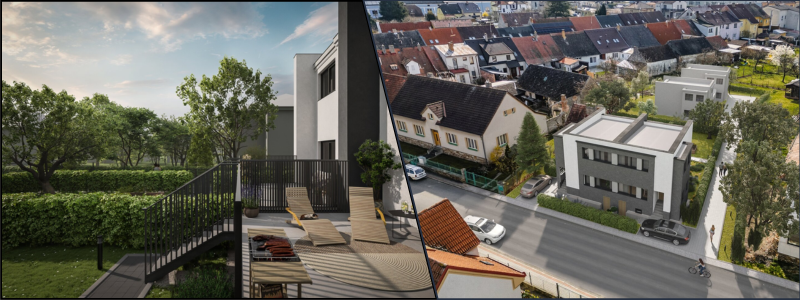This post lists the different techniques for 3D architectural visualizations and tips for your services firm. 3D architectural visualization services have become an essential tool for architects, designers, and real estate developers. They provide a realistic view of a project before construction begins, helping clients and stakeholders visualize the final product.
Cad Crowd is an industry-leading platform that helps architectural and design companies find expert 3D visualization services. As the demand for 3D visualizations grows, architectural services firms must stay ahead by mastering various techniques and refining their offerings.
🚀 Table of contents
- The power of 3D architectural visualizations
- Mastering photorealistic rendering
- Utilizing VR and AR
- Leveraging animation and cinematic techniques
- Implementing procedural modeling and parametric design
- Enhancing real-time rendering capabilities
- Focusing on storytelling and emotional impact
- Incorporating client feedback effectively
- Staying updated with industry trends and technology
- How Cad Crowd can help
The power of 3D architectural visualizations
3D architectural visualizations have become an indispensable tool in the realm of architecture and design. These digital representations transform abstract blueprints into tangible, immersive experiences, offering a multitude of benefits for both architects and clients.
Firstly, 3D visualizations facilitate effective communication. Complex architectural concepts can be challenging to convey through traditional 2D drawings. However, with 3D models, clients can gain a clear understanding of the proposed design, its scale, and spatial relationships. This visual clarity fosters better collaboration between architects and clients, reducing the chances of misunderstandings and ensuring that the final product aligns with the client’s vision.
Secondly, these visualizations play a crucial role in the design process itself. Architects can experiment with different design iterations, materials, and lighting conditions to refine their concepts before committing to construction. This iterative approach helps identify potential issues early on, saving time and money in the long run. Moreover, 3D models can be used to assess the project’s impact on the surrounding environment, ensuring harmony with the existing landscape.
Lastly, 3D visualizations are powerful marketing tools. High-quality renderings and animations can generate excitement and interest in a project, attracting potential buyers or investors. By showcasing the project’s aesthetic appeal and functionality, developers can create a strong first impression and build anticipation for the finished product.
Here are some techniques you can try when it’s time to work on your 3D renders.
RELATED: Exploring the different versions of dynamic 3D visuals in architecture and design services

Mastering photorealistic rendering
Photorealistic rendering is the gold standard in 3D architectural visualization. It involves creating images that are nearly indistinguishable from real-life photographs. Achieving this level of realism requires a deep understanding of lighting, materials, textures, and post-production techniques.
Lighting: Proper lighting is crucial for photorealism. Use global illumination and physically accurate light sources to simulate how light interacts with different surfaces. Pay attention to natural light, shadows, and reflections to create a lifelike environment. Lighting design services would be a great choice for most lighting design needs.
Materials and textures: Realistic materials and textures are essential for achieving photorealism. Utilize high-resolution textures and carefully map them to your 3D models. Experiment with material properties like reflectivity, transparency, and roughness to match real-world surfaces.
Post-production: Post-production is the final step in enhancing your renderings. Use software like Adobe Photoshop or After Effects to adjust color balance, add effects, and fine-tune details. Post-production allows you to polish your images and add a creative touch that sets your work apart.
Tip for your firm: Invest in high-quality texture libraries and lighting setups. Train your team on advanced rendering techniques and encourage continuous learning to keep up with industry advancements.
Utilizing VR and AR
Virtual reality (VR) and augmented reality (AR) are revolutionizing the way architectural visualizations are presented. Virtual reality designers use these technologies to offer immersive experiences that allow clients to explore designs in a more interactive and engaging way.
Virtual reality: VR allows users to step inside a 3D model and experience the space as if they were physically present. This technique is particularly useful for large-scale projects like commercial buildings or residential developments. Clients can walk through rooms, examine details, and get a true sense of scale and proportion.
Augmented reality: AR overlays 3D models onto the real world, allowing clients to visualize how a design will fit into an existing environment. This is especially beneficial for renovations or additions where the new structure needs to blend seamlessly with the old.
Tip for your firm: Integrate VR and AR into your presentation toolkit. Offer clients VR walkthroughs and AR experiences to enhance their understanding and engagement. This can differentiate your firm from competitors and leave a lasting impression.
RELATED: 3D real estate rendering services: What is the primary purpose of 3D real estate virtual tours?
Leveraging animation and cinematic techniques
Animation and cinematic techniques add a dynamic element to 3D architectural visualizations. By animating elements like sunlight, water, or people, your architectural design firm can bring your designs to life and tell a compelling story.
- Walkthroughs: Create animated walkthroughs that guide viewers through a space, highlighting key features and design elements. This technique is effective for showing the flow of a building and how different areas connect.
- Cinematic shots: Use cinematic camera angles and movements to create visually stunning presentations. Techniques like dolly shots, pans, and zooms can add drama and focus to your visualizations, making them more engaging and memorable.
Tip for your firm: Collaborate with professionals skilled in animation and cinematography to produce high-quality visualizations. Invest in software that allows for smooth camera movements and realistic animations.
Implementing procedural modeling and parametric design
Procedural modeling and parametric design are advanced techniques that allow expert CAD designers to create complex structures and patterns. These techniques rely on algorithms and parameters to generate designs that would be difficult or time-consuming to create manually.
- Procedural modeling: This technique uses algorithms to create detailed and intricate models, such as landscapes, urban layouts, or complex facades. Procedural modeling is highly efficient and allows for easy adjustments and variations.
- Parametric design: Parametric design involves creating models based on a set of parameters that can be easily modified. This is particularly useful for custom designs where clients may want to explore different options. Changes to parameters automatically update the model, saving time and ensuring accuracy.
Tip for your firm: Explore software like Grasshopper for Rhino or Houdini for procedural modeling and parametric design. Training your team in these tools can open up new creative possibilities and improve efficiency.
Enhancing real-time rendering capabilities
Real-time 3D rendering services are becoming increasingly important as clients demand faster turnaround times and more interactive presentations. This technique allows for immediate feedback on design changes, making it ideal for collaborative sessions with clients.
- Real-time engines: Real-time rendering engines like Unreal Engine or Unity can be used to create interactive models that clients can explore on their own. These engines also support VR and AR, making them versatile tools for architectural visualization.
- Optimization: Real-time rendering requires optimization to ensure smooth performance. Simplify models, reduce polygon counts, and use efficient lighting techniques to maintain high-quality visuals without sacrificing speed.
Tip for your firm: Invest in powerful hardware and software to support real-time rendering. Incorporate this capability into your workflow to offer clients faster and more interactive experiences.
RELATED: How emotional design in architecture enhances mood for 3D modeling & architectural services firms

Focusing on storytelling and emotional impact
3D architectural visualizations are not just about showing a design; they are about telling a story and evoking emotions. Architectural visualization experts understand that effective visualizations connect with viewers on an emotional level, making the design more memorable and impactful.
- Narrative structure: Develop a narrative structure for your visualizations. Think about the story you want to tell and how each element of the design contributes to that story. Whether it’s the warmth of a family home or the grandeur of a corporate headquarters, your visualization should convey the intended mood and atmosphere.
- Emotional appeal: Use lighting, color, and composition to create an emotional response. For example, warm lighting and soft textures can evoke a sense of comfort and coziness, while sharp lines and cool colors can convey modernity and efficiency.
Tip for your firm: Work closely with clients to understand the emotions they want to evoke with their projects. Tailor your visualizations to reflect these emotions, making them more persuasive and compelling.
Incorporating client feedback effectively
Client feedback is a crucial part of the 3D visualization process. Incorporating feedback effectively ensures that the final product meets client expectations and enhances their satisfaction.
Open communication: Establish clear channels of communication with clients from the outset. Encourage regular feedback and provide updates on the progress of the visualization. This helps to manage expectations and avoids misunderstandings.
Iterative process: Use an iterative process where changes are made gradually based on client feedback. This allows for continuous improvement and ensures that the final product aligns with the client’s vision.
Tip for your firm: Develop a feedback management system that tracks client comments and requests. This system should be transparent and easy to use, ensuring that all feedback is addressed in a timely manner.
RELATED: How 3D rendering enhances great architectural design presentations for companies
Staying updated with industry trends and technology
The field of 3D architectural visualization is constantly evolving, with new tools, techniques, and trends emerging regularly. Staying updated with these changes is essential for maintaining a competitive edge for your architectural planning and design company.
- Continuous learning: Encourage your team to pursue continuous learning through courses, workshops, and industry conferences. This helps them stay informed about the latest developments and enhances their skills.
- Adopting new tools: Be open to adopting new tools and technologies that can improve your workflow and the quality of your visualizations. Whether it’s a new rendering engine, modeling software, or VR headset, staying ahead of the curve is key to success.
Tip for your firm: Allocate time and resources for research and development. Experiment with new tools and techniques to find those that best suit your firm’s needs and goals.
How Cad Crowd can help
Are you ready to elevate your architectural visualizations and impress your clients? Our expert team at Cad Crowd is here to help. Cad Crowd is an industry leader in providing bespoke outsourcing services to architectural, engineering, and design companies. Whether you’re looking to integrate VR experiences, master photorealistic rendering, or explore procedural modeling, we have the expertise you need. Contact us today to request a quote and take your 3D visualization services to the next level!

